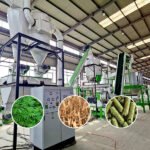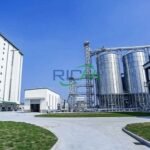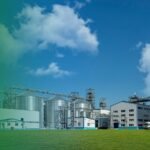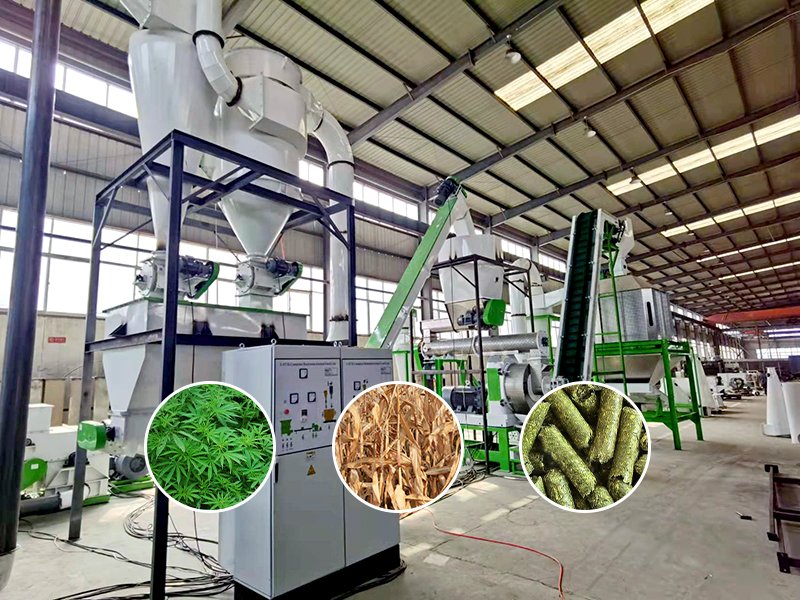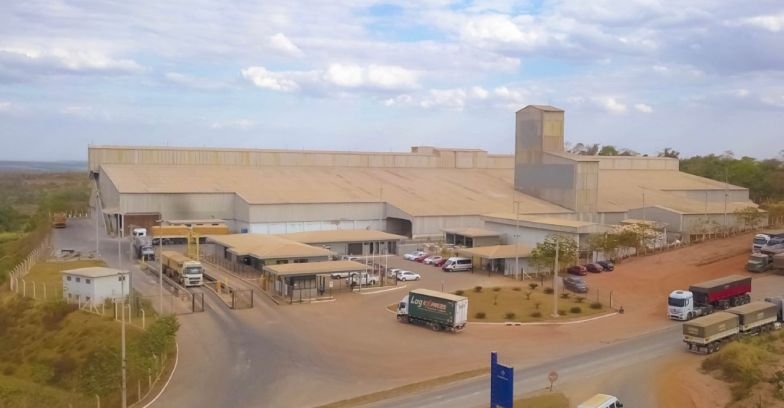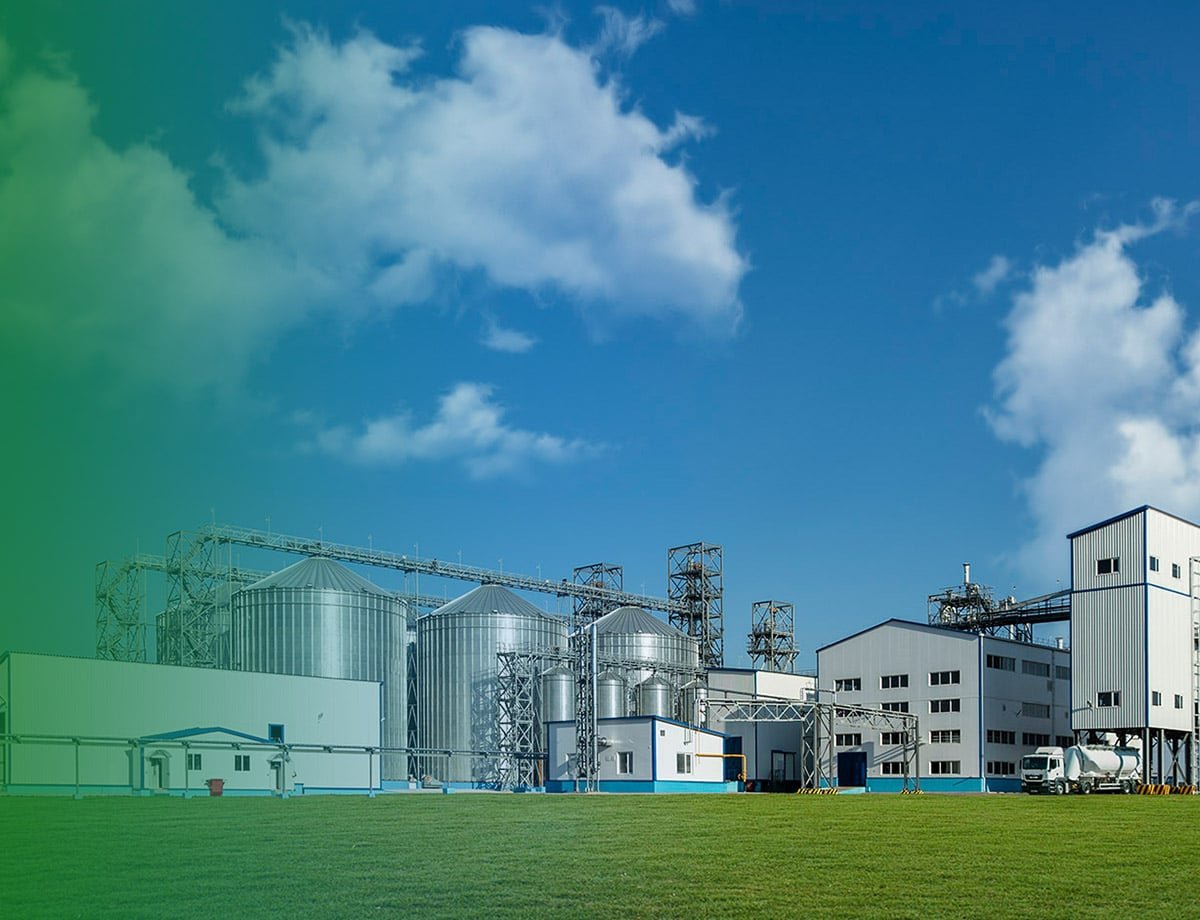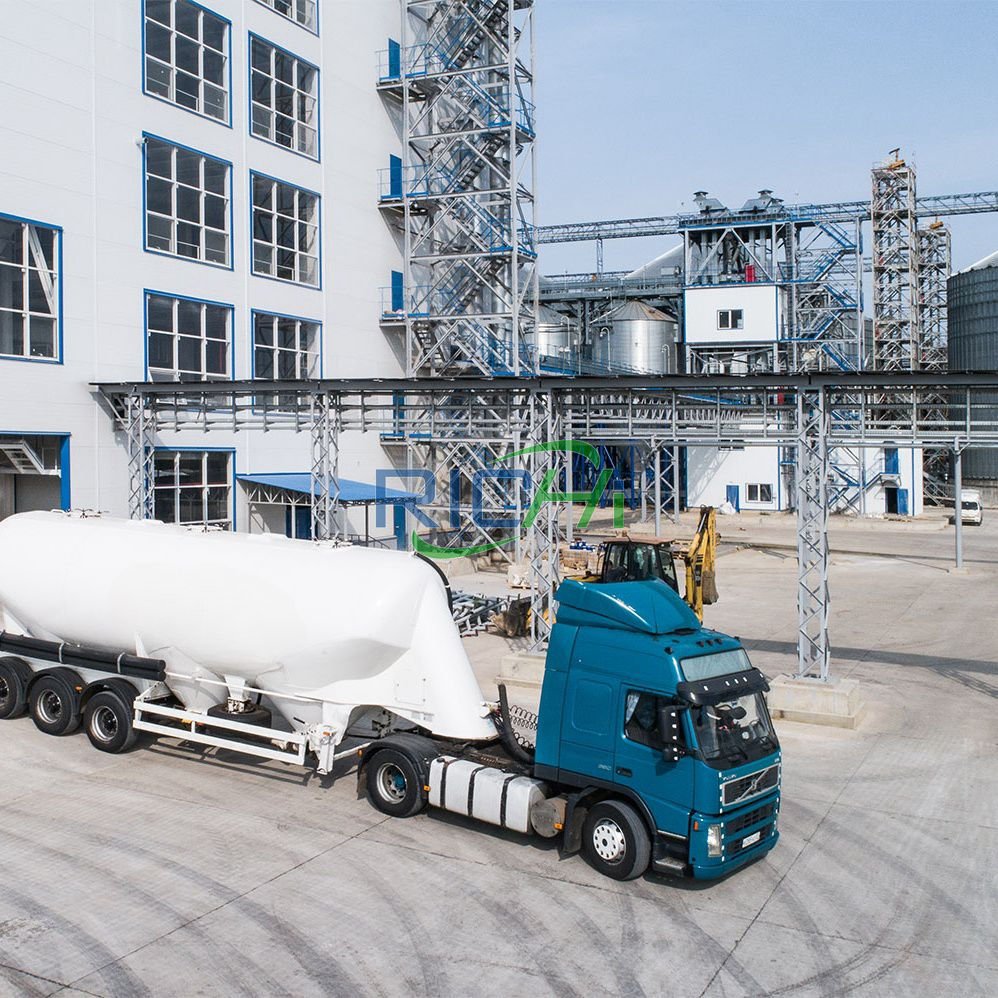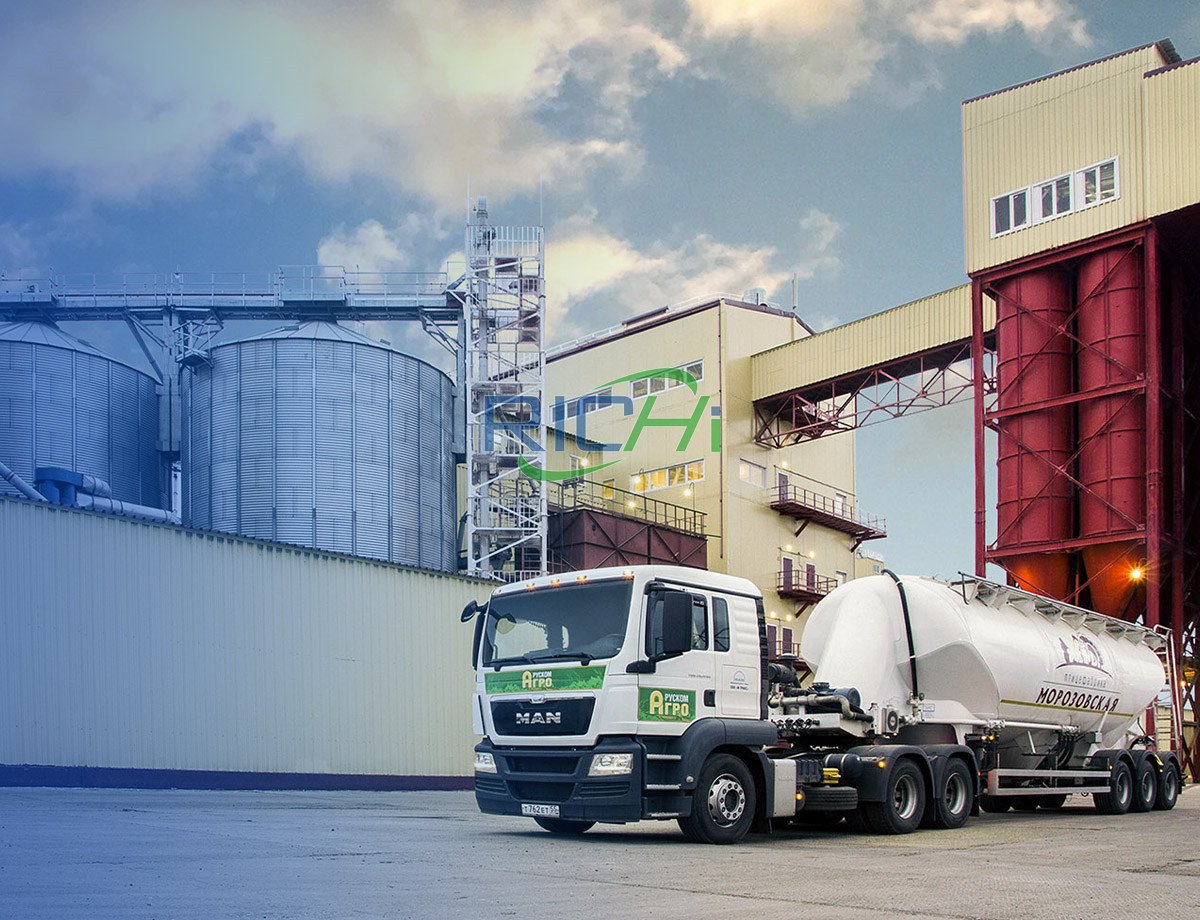Introduction
Lucerne, also known as alfalfa, is a highly nutritious forage crop that plays a vital role in animal husbandry. Rich in protein, vitamins, and minerals, lucerne is widely used in feeding livestock such as cattle, sheep, rabbits, and more. The demand for efficient and effective ways to process lucerne into animal feed has led to the development of the lucerne pellet machine. This machine not only simplifies the process of producing feed but also enhances the nutritional value and storage stability of the final product. In this comprehensive guide, we will explore the key aspects of lucerne pellet machines, the types of animal feed they can produce, and the production technology involved.
What Is a Lucerne Pellet Machine?
A lucerne pellet machine is a specialized piece of equipment designed to compress lucerne into compact, uniform pellets. These pellets serve as a convenient and nutrient-rich feed for various types of livestock. The machine operates by applying pressure and heat to the chopped or ground lucerne, which is then extruded through a die to form cylindrical pellets. These pellets can vary in size, depending on the die used, making them suitable for different animal species.
Lucerne pellet machines are essential in modern animal feed production due to their ability to convert loose, bulky forage into a dense, easy-to-handle form. This not only reduces storage space but also improves the feed’s shelf life and facilitates transportation. Additionally, pelleted feed minimizes wastage, as animals are less likely to sift through and discard it.
What Animal Feed Can Be Produced by a Lucerne Pellet Machine?
Lucerne pellet machines are versatile and can be used to produce feed for a wide range of animals. The type of feed produced depends on the specific formulation and the intended livestock. Some of the most common types of animal feed produced using a lucerne pellet machine include:
- Cattle Feed: Lucerne is an excellent source of protein and fiber for cattle, making it a key ingredient in cattle feed. Pelleted lucerne provides a balanced diet that promotes healthy growth, improves milk production in dairy cattle, and enhances overall health.
- Sheep Feed: Sheep benefit from the high fiber content of lucerne, which aids in digestion and helps maintain healthy weight. Lucerne pellets can be formulated to meet the specific nutritional needs of sheep at different stages of their lifecycle.
- Rabbit Feed: Rabbits require a diet high in fiber to support their digestive health. Lucerne pellets, when combined with other essential nutrients, provide a complete and balanced diet for rabbits, promoting healthy teeth and a strong digestive system.
- Horse Feed: Horses thrive on a diet rich in fiber, and lucerne is a popular component of equine feed. Lucerne pellets are easy to digest and provide the necessary nutrients for energy, muscle development, and overall vitality in horses.
- Goat Feed: Goats are known for their ability to digest fibrous plant material, and lucerne is a valuable addition to their diet. Pelleted lucerne can be fed to goats to support growth, reproduction, and milk production.
- Poultry Feed: While lucerne is not a primary ingredient in poultry feed, it can be included in small amounts to provide additional vitamins and minerals. Lucerne pellets are particularly beneficial for free-range poultry, as they mimic the natural forage available in the wild.
Animal Pellet Machines That Can Be Used as RICHI Lucerne Pellet Machine
RICHI Machinery is a leading manufacturer of animal pellet machines, offering a range of equipment designed for various types of feed production. The following are some of the animal pellet machines that can be used as a RICHI lucerne pellet machine:
- Rabbit Pellet Maker: RICHI’s rabbit pellet makers are specifically designed to produce high-quality pellets for rabbits. These machines ensure that the pellets are uniform in size and contain the right balance of nutrients to support rabbit health and growth.
- Pellet Machine for Cattle Feed: RICHI offers specialized pellet machines for cattle feed production. These machines are capable of processing large quantities of lucerne and other ingredients to create nutrient-rich pellets that meet the dietary needs of cattle.
- Sheep Feed Pellet Machine: RICHI’s sheep feed pellet machines are designed to produce pellets that are easy for sheep to consume and digest. The machines are equipped with features that ensure the feed is of consistent quality and nutritional value.
- Horse Feed Pellet Machine: RICHI’s horse feed pellet machines are built to handle the specific requirements of equine nutrition. These machines produce pellets that are palatable, digestible, and nutritionally balanced for horses.
- Goat Feed Pellet Machine: RICHI’s goat feed pellet machines are versatile and can be used to produce feed for goats at different stages of growth. The machines are designed to maintain the nutritional integrity of the ingredients, ensuring that the pellets are both nutritious and appetizing for goats.
Characteristics of RICHI Grass Feed Granulator
RICHI Machinery’s grass feed granulators, including those used for lucerne, are known for their advanced features and reliable performance. The following are some of the key characteristics of RICHI grass feed granulators:
- High Efficiency: RICHI granulators are designed to operate at high efficiency, reducing energy consumption while maximizing output. This makes them ideal for large-scale feed production.
- Durability: Built with high-quality materials, RICHI granulators are durable and capable of withstanding the rigors of continuous operation. This ensures a long service life and minimizes the need for frequent maintenance.
- Versatility: RICHI grass feed granulators can process a wide range of raw materials, including lucerne, straw, grass, and other forage crops. This versatility allows for the production of various types of animal feed.
- Precision: RICHI granulators are equipped with advanced controls that allow for precise adjustment of pellet size, density, and moisture content. This ensures that the final product meets the specific requirements of different animals.
- Easy Operation: RICHI granulators are user-friendly, with intuitive controls and automated features that simplify the feed production process. Operators can easily monitor and adjust settings to achieve optimal results.
- Consistency: The design of RICHI granulators ensures that the pellets produced are uniform in size and shape, providing consistent quality in every batch.
How Does RICHI Lucerne Pellet Machine Work?
The operation of a RICHI lucerne pellet machine involves several key steps, each crucial to the production of high-quality feed pellets. Here’s a step-by-step overview of how the machine works:
- Raw Material Preparation: The process begins with the preparation of the raw lucerne. The lucerne is first dried to reduce moisture content, which is essential for efficient pelleting. It is then chopped or ground into smaller particles to facilitate processing.
- Feeding: The prepared lucerne is fed into the pellet machine’s hopper. The machine is equipped with a feeder that ensures a steady and controlled flow of raw material into the pelleting chamber.
- Conditioning: Inside the pelleting chamber, the lucerne is subjected to conditioning. This involves the addition of steam and heat to soften the fibers and improve the binding properties of the material. Conditioning also helps in killing any pathogens present in the raw material, ensuring the safety of the final product.
- Pelleting: The conditioned lucerne is then forced through a die by rotating rollers. The die has small holes that shape the lucerne into cylindrical pellets. As the material is extruded through the die, it is cut to the desired length by a rotating knife.
- Cooling: Once the pellets are formed, they are hot and soft. They are passed through a cooler, where air is blown over them to reduce the temperature and harden the pellets. This step is crucial to prevent spoilage and maintain the quality of the pellets during storage.
- Screening: After cooling, the pellets are screened to remove any fines or broken pellets. The screened pellets are then ready for packaging or direct use.
- Packaging: The final step involves packaging the pellets in bags or bulk containers for storage and transportation. The packaging process is designed to protect the pellets from moisture and contamination.
Advantages of Grass Feed Pellets
Grass feed pellets, including those made from lucerne, offer several advantages over traditional loose feed. These benefits make them a popular choice among livestock farmers:
- Nutrient Density: Pelleting concentrates the nutrients in the feed, ensuring that animals receive a balanced and consistent diet with every bite. This is particularly important for animals with high nutritional requirements.
- Reduced Waste: Pelleted feed minimizes wastage, as animals are less likely to sort through the feed and discard less desirable components. This leads to more efficient feed utilization.
- Improved Digestibility: The pelleting process breaks down the fibrous structure of the raw material, making it easier for animals to digest. This improves nutrient absorption and overall animal health.
- Enhanced Storage and Handling: Pellets are compact and easy to store, reducing the space needed for feed storage. They are also easier to handle and transport compared to loose forage.
- Longer Shelf Life: Pelleted feed has a longer shelf life due to its low moisture content and compact form. This reduces the risk of spoilage and allows for longer-term storage.
- Consistency: Pellets provide a uniform feed that ensures all animals in a herd or flock receive the same nutrients. This is crucial for maintaining consistent growth and production levels.
How to Produce Grass Feed Pellets
Producing grass feed pellets involves several steps, each of which must be carefully managed to ensure the quality of the final product. Here’s a detailed guide on how to produce grass feed pellets:
- Raw Material Selection: Start by selecting high-quality raw materials, such as lucerne, grass, or other forage crops. The quality of the raw material directly affects the nutritional value and quality of the pellets.
- Drying: The raw material must be dried to a moisture content of around 10-15%. This is essential for efficient pelleting and to prevent the growth of mold or bacteria during storage.
- Grinding: The dried raw material is then ground into small particles using a hammer mill or other grinding equipment. The particle size should be uniform to ensure consistent pellet formation.
- Mixing: If producing a compound feed, the ground material is mixed with other ingredients, such as grains, vitamins, and minerals. The mixture must be homogeneous to ensure that each pellet contains the right balance of nutrients.
- Conditioning: The mixed material is conditioned with steam and heat to soften the fibers and enhance the binding properties. This step also improves the digestibility and palatability of the feed.
- Pelleting: The conditioned material is fed into the pellet machine, where it is compressed through a die to form pellets. The size of the pellets can be adjusted by changing the die.
- Cooling: After pelleting, the hot pellets are cooled to room temperature. This step is essential to harden the pellets and prevent them from crumbling during storage.
- Screening: The cooled pellets are screened to remove any fines or broken pellets. The fines can be recycled back into the pelleting process.
- Packaging: The finished pellets are packaged in bags or bulk containers for storage and transportation. Proper packaging ensures that the pellets remain dry and free from contamination.
Production Technology and Equipment for Grass Feed Granules
The production of grass feed granules requires specialized equipment that is designed to handle the unique properties of forage crops. RICHI Machinery offers a range of equipment tailored to the production of grass feed pellets, including:
- Hammer Mills: These are used for grinding the raw material into small particles. RICHI hammer mills are designed for high efficiency and consistent output, ensuring that the ground material is of uniform size.
- Mixers: RICHI offers mixers that ensure a homogeneous blend of ingredients, essential for producing balanced feed. The mixers are available in different capacities to suit various production scales.
- Conditioners: RICHI’s conditioners are designed to soften the raw material and improve its binding properties before pelleting. They are equipped with advanced controls to ensure precise conditioning.
- Pellet Mills: RICHI pellet mills are the heart of the production process, converting the conditioned material into pellets. These mills are available in various models to meet the needs of different production capacities.
- Coolers: RICHI coolers are designed to rapidly cool the pellets after pelleting, ensuring that they are ready for packaging. The coolers are equipped with air circulation systems that maintain optimal cooling conditions.
- Screeners: RICHI screeners remove fines and broken pellets from the final product, ensuring that only high-quality pellets are packaged and delivered to customers.
- Packaging Machines: RICHI offers packaging machines that are designed to efficiently package pellets in bags or bulk containers. These machines are equipped with features that ensure accurate weighing and sealing, preserving the quality of the pellets.
Conclusion
A lucerne pellet machine is an indispensable tool in modern animal feed production, offering numerous advantages in terms of efficiency, nutrient density, and ease of storage and handling. By understanding the capabilities of a lucerne pellet machine and the technology involved in producing grass feed pellets, livestock farmers can enhance the quality of their feed and improve the overall productivity of their operations. RICHI Machinery provides the expertise and equipment needed to successfully produce high-quality animal feed, making it a trusted partner in the industry.


